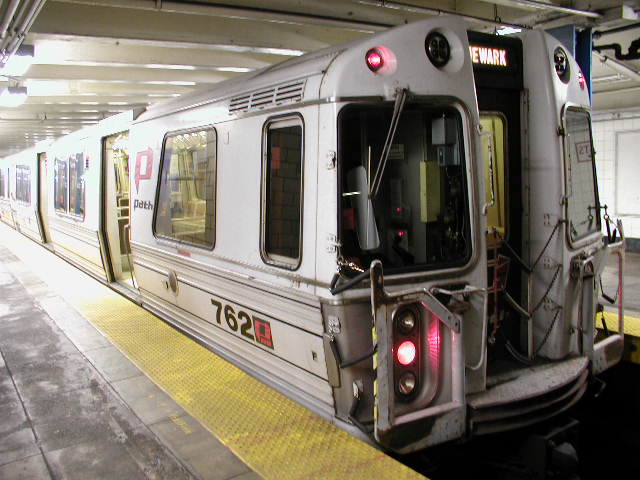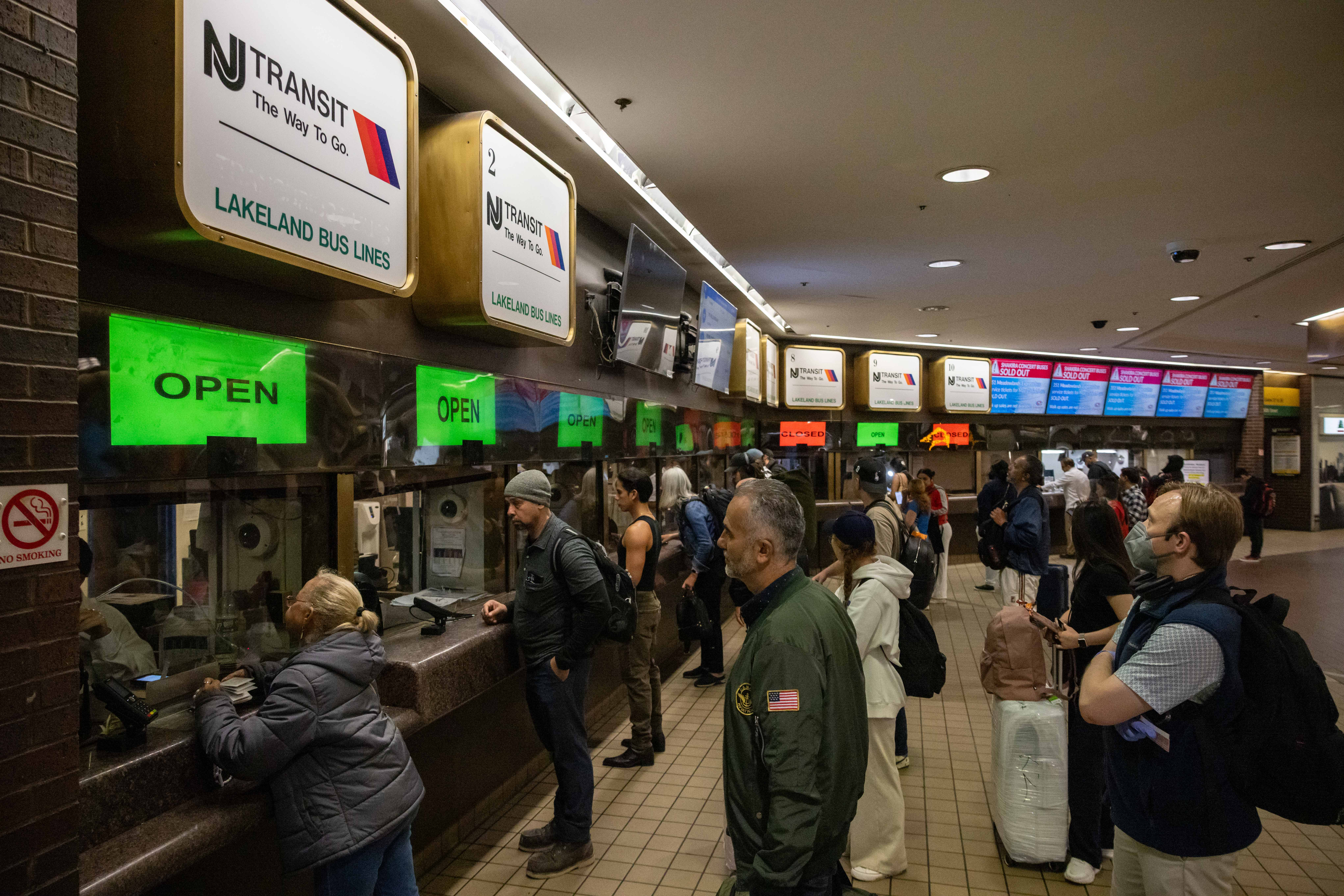PATH Train Shutdown: Service Resumes with Massive Delays!
PATH Train Chaos: System Restarts After Morning Shutdown – But Expect Delays!
Introduction: Navigating the PATH After the Storm
Ugh, morning commutes. We've all been there, right? The scramble for a seat, the jostling for space, the silent prayer that your train arrives on time. But this Thursday morning took the cake for many PATH train riders. A systemwide shutdown threw a wrench into everyone's plans, leaving thousands stranded and scratching their heads. But don't worry, the PATH is back (sort of)! Let's dive into what happened, what's happening now, and what you can expect if you're planning to ride the rails today.
The Great PATH Shutdown of '25: What Happened?
Around 8 AM, the PATH system ground to a halt. Think of it like a city-wide power outage, but for trains. The reason? According to the Port Authority, a track condition at Grove Street appears to be the culprit. But what does that really mean? Well, it could be anything from a minor equipment malfunction to something a bit more serious. Essentially, something wasn't right, and they had to shut down the whole system to investigate. This is the kind of news that makes you want to crawl back into bed.
Initial Cause: A Mysterious Track Condition
We don't have all the nitty-gritty details, but the Port Authority identified a "track condition" at Grove Street as the initial trigger for the shutdown. It's like a doctor diagnosing a symptom without knowing the underlying disease. It could be a cracked rail, a signal problem, or even debris on the tracks. Whatever it was, it was enough to bring the entire PATH system to a standstill.
The Ripple Effect: Systemwide Disruption
The impact of the Grove Street issue cascaded across the entire PATH network. Imagine dropping a pebble in a pond – the ripples spread outwards. Stations became overcrowded, schedules went haywire, and commuters were left scrambling for alternatives. This just underscores how interconnected our transportation systems are. One small problem can have huge consequences.
The Aftermath: Service Resumes, But With a Catch
The good news? The PATH system is back up and running! The bad news? Don't expect a smooth ride. The Port Authority has warned of "extensive delays," and that's putting it mildly. Think of it like restarting your computer after a crash – things might be a little wonky for a while. Trains will likely be running behind schedule, stations will be crowded, and frustration levels will be high.
Residual Delays: Brace Yourself
What exactly do "residual delays" mean? It basically translates to: "Don't expect things to be back to normal for a while." Expect longer wait times, potentially overcrowded trains, and the possibility of unexpected disruptions. It's always a good idea to factor in extra travel time and maybe pack a snack.
Cross-Honoring: Your Alternative Routes
Thankfully, there's a silver lining! NJ Transit rail is cross-honoring PATH tickets, so you can hop on a NJ Transit train using your PATH ticket. That means if you are traveling through Newark, Secaucus, or Hoboken, you've got some solid options. Even the HBLR is cross-honoring at Hoboken and Exchange Place. New York Waterway is doing the same at Hoboken, Brookfield Place, and Paulus Hook. Consider it a lifeline during this transportation hiccup.
Why Did This Happen? Digging Deeper
While the immediate cause was the track condition at Grove Street, it's natural to wonder: why does this happen in the first place? Is our infrastructure crumbling? Are these incidents becoming more frequent? These are valid questions, and they deserve some attention. Is it a maintenance issue? An aging infrastructure issue? A staffing issue? Let's hope the Port Authority is looking into the root causes to prevent future disruptions.
Infrastructure Concerns: An Aging System?
Many aging systems are experiencing failures across the U.S., and the PATH is no exception. There's a growing concern that our infrastructure is in dire need of upgrades and modernization. Could this shutdown be a symptom of a larger problem? Only time and investigation will tell. However, it raises the question of investment in public transportation and if we're doing enough.
Maintenance and Prevention: A Proactive Approach
Are preventative maintenance measures being taken to ensure the system continues to run smoothly? A proactive approach is crucial to identify and address potential problems before they lead to shutdowns. Regular inspections, timely repairs, and proactive upgrades can help minimize disruptions and keep the PATH running efficiently. If not, further shutdowns may plague the PATH in the future.
What Can You Do? Tips for Navigating the Chaos
So, you're faced with the prospect of navigating the PATH system after this mess. What can you do to minimize the stress and get to your destination in one piece? Here are a few tips:
- Check the PATH Twitter feed (@PATHTrain) for real-time updates. Seriously, this is your best friend right now.
- Consider alternative routes. Can you take a bus, ferry, or NJ Transit train instead?
- Allow extra travel time. Don't rush – you'll only get more frustrated.
- Be patient. Everyone's in the same boat (or train car).
- Pack a snack and a book. You might be waiting a while.
The Apology: Is it Enough?
The Port Authority offered an apology for the inconvenience. But does an apology really cut it when people's lives are disrupted? Some people may accept it, while others may expect a more detailed explanation and a commitment to preventing future incidents. Words are nice, but actions speak louder.
Public Trust: Rebuilding Confidence
Incidents like this can erode public trust in the transportation system. Rebuilding that trust requires transparency, accountability, and a clear plan for improvement. The Port Authority needs to demonstrate that they're taking the situation seriously and that they're committed to providing a reliable and efficient service.
Future Solutions: Preventing Future Disruptions
What steps can be taken to prevent similar shutdowns in the future? Investing in infrastructure upgrades, improving communication systems, and implementing proactive maintenance programs are all crucial steps. The goal is to create a more resilient and reliable PATH system that can withstand unexpected challenges.
The Social Media Buzz: How People Reacted
Of course, a major disruption like this sent social media into a frenzy. People took to Twitter, Facebook, and other platforms to vent their frustrations, share information, and offer support (or snarky comments). Social media often serves as a real-time gauge of public sentiment, and it was clear that people were not happy.
#PATHTrain: The Trending Topic
The hashtag #PATHTrain was trending throughout the morning, as commuters used it to share their experiences, ask questions, and complain about the delays. It became a virtual gathering place for those affected by the shutdown. Social media really amplifies these issues, doesn't it?
Commuter Frustrations: Voicing Their Concerns
Many commuters used social media to voice their frustrations with the PATH system. They complained about overcrowding, delays, and a lack of communication. These complaints underscore the importance of a reliable and efficient transportation system for the region's economy and quality of life.
Long-Term Impact: What Does This Mean for the Future of the PATH?
This incident raises some serious questions about the future of the PATH system. Will it lead to increased investment in infrastructure upgrades? Will it prompt a reevaluation of maintenance procedures? Will it change the way the Port Authority communicates with the public? Only time will tell, but this shutdown could be a turning point.
Investing in the Future: Infrastructure Upgrades
Investing in infrastructure upgrades is essential for the long-term health of the PATH system. This includes replacing aging equipment, modernizing signaling systems, and expanding capacity to meet growing demand. These improvements will not only reduce the risk of disruptions but also enhance the overall riding experience.
Improving Communication: Keeping Riders Informed
Effective communication is crucial during disruptions. The Port Authority needs to provide timely and accurate information to riders, using a variety of channels such as Twitter, email, and in-station announcements. Keeping riders informed can help minimize frustration and allow them to make informed decisions about their travel plans.
Conclusion: Riding Out the Delays
The PATH system is back in operation, but with significant delays. Remember to check for updated information, consider alternative routes, and factor in extra travel time. Stay informed, be patient, and hang in there. While this morning's shutdown was frustrating, it also highlights the importance of investing in our transportation infrastructure and ensuring that it's reliable and efficient. Let's hope this incident serves as a wake-up call to prioritize the needs of commuters and to prevent similar disruptions in the future.
Frequently Asked Questions
- Why did the PATH system shut down?
The Port Authority cited a track condition at Grove Street as the initial cause of the systemwide shutdown. The exact nature of the track condition has not been publicly disclosed.
- How long will the delays last?
The Port Authority has warned of "extensive delays," and it's difficult to say exactly when service will return to normal. Check the PATH Twitter feed (@PATHTrain) for real-time updates.
- What are my alternative transportation options?
NJ Transit rail is cross-honoring PATH tickets, as is HBLR at Hoboken and Exchange Place, and New York Waterway at Hoboken, Brookfield Place, and Paulus Hook. Consider these options if possible.
- What is the Port Authority doing to prevent future shutdowns?
While the Port Authority has not yet released a detailed plan, it's expected that they will investigate the cause of the shutdown and take steps to prevent similar incidents in the future. This could include infrastructure upgrades, improved maintenance procedures, and enhanced communication systems.
- Where can I get the most up-to-date information on PATH service?
The PATH Train Twitter account (@PATHTrain) is the best source for real-time updates. You can also check the Port Authority's website for official announcements.

